Bosch’s Survival Plan
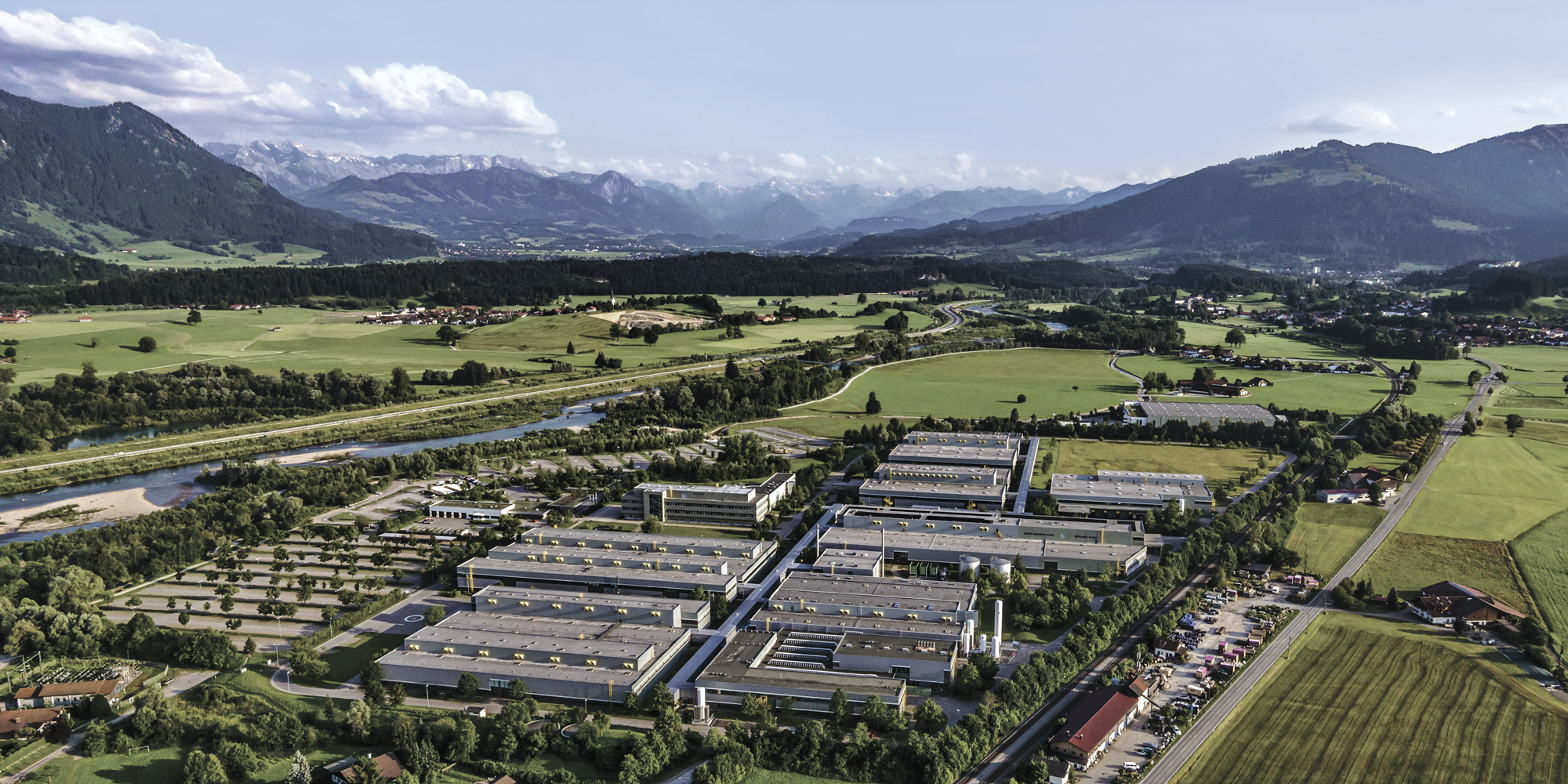
A half-dozen young, mostly male engineers sit in a bright, open office digging through a mountain of code. Multi-monitor work stations sit on desks strewn with laptops, tablets, and headphones. This is not a tech startup, however. It’s one room in the Bosch automotive plant near Immenstadt im Allgäu, Germany. Today these factory workers are culling immediate production inefficiencies and developing systems that they hope will, by next year, allow the factory’s machines to diagnose their own problems, order replacement parts, and anticipate necessary maintenance hours or even weeks in advance.
Through a bank of large windows opening from the computer room onto the shop floor, row after row of machines hum a percussive melody as they turn out small parts—fuel injection nozzles, electronic safety control systems, mechanical brake systems—destined for car companies including BMW, Volkswagen, and Tesla.
See the Rest of the Package
50 Smartest Companies
Atop each machine is a stoplight showing its efficiency status, and large overhead monitors nearby display real-time production information. Operators with tablets tap into data being captured by more than 100 sensors on each machine. Managers see down-to-the-minute values for everything from electricity to compressed air. They can break out individual machines, even individual tools. Everything traceable is tracked by RFID tags. The displays show not just numbers in charts but also visually accurate, cartoon-like images of the actual machines and factory floor.
For Bosch there is an urgency to making its already efficient production system even more fully automated. With 375,000 employees around the world, this 130-year-old producer of assembly-line machines, refrigerators, and much more must move toward connected manufacturing to remain competitive. High labor and energy costs make locations like this plant expensive to operate.

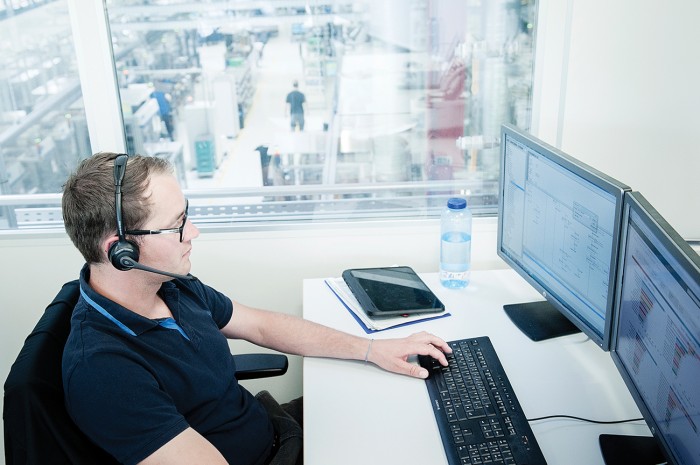
It’s a shift executives say is every bit as disruptive as last century’s mass--production revolution. Failing to keep up would be like missing the changeover from film to digital photography, says Stefan Assmann, Bosch’s senior vice president of connected industry. “Kodak could be a warning for companies to really do this transition,” he says. “The main risk is not to work on [the transition], and to think that the good old times will continue.”

Signs of the company’s efforts are everywhere. Inside the cafeteria, the cashiers have been replaced by RFID-tagged plates and cups. Outside, robotic mowers buzz the Bosch symbol—an armature within a circle—into the grass as they trim the lawn.
On the factory floor, productivity on key assembly lines has increased 20 percent per year since 2012. And by 2020, Bosch estimates, technologies like connected assembly lines, predictive maintenance, and machines with a certain degrees of self-awareness will result in $1.12 billion (1 billion euros) in additional sales, alongside a similar amount in operational savings. “There’s only one point,” says plant manager Rupert Hoellbacher of the push to make this and the other 10 Bosch plants he leads leaner, more connected, and smarter: “To make money.”

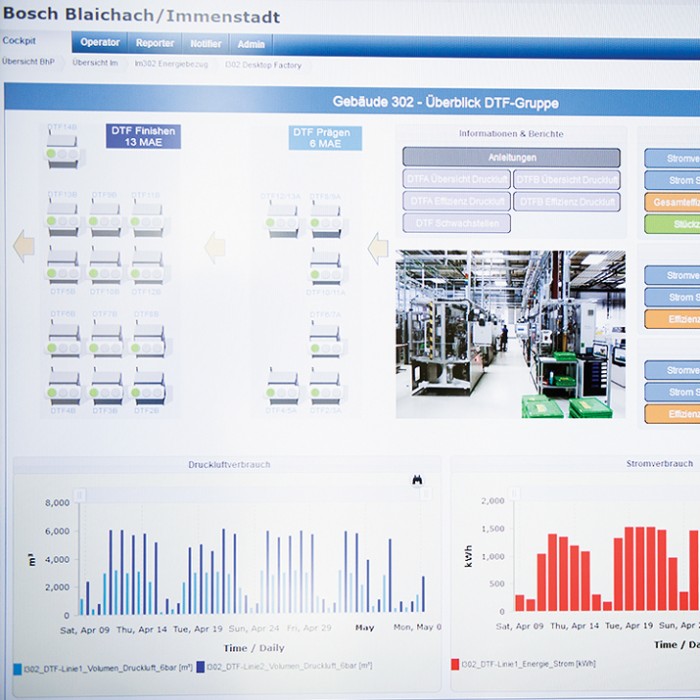
As we sit in a small conference room at the factory, Hoellbacher explains that the limits of conventional production, even with robots on the assembly line, are becoming evident. There’s only so much you can squeeze out of a machine when you need to measure and adjust to minute variations in heat, cycle time, or vibration frequency with a sensitivity and speed beyond what humans can achieve.


To meet the company’s productivity goals, whole assembly lines must monitor themselves with software capable of parsing complex data at supercomputer speeds in order to devise the most efficient operating processes, anticipate breakdowns, and prepare solutions. Making that work smoothly will be a big challenge, but already, most of the machines in Hoellbacher’s factories are connected and transmitting information to Bosch’s data center in Stuttgart.
By the end of the year that will be 6,000 machines, at 11 plants, from which data is collected by the second, with each machine’s day summarized and analyzed in a 20-page automated report. Bosch has 250 factories around the globe, and the company’s plan is to introduce the same technology to all of them.
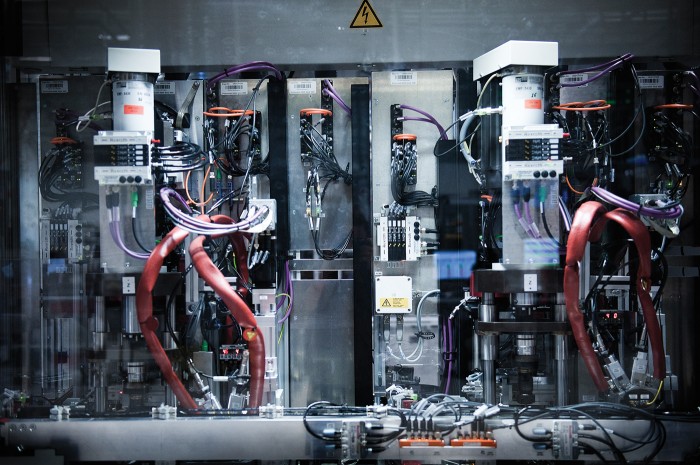
On the plant floor, Arnd Kolleck, who’s in charge of the IT effort, is talking about a Bosch product that offers a glimpse a little further into the future: iBooster. The device, which the company sells to automakers, adjusts the braking pressure in regular brakes or regenerative braking systems, which are commonly used to convert kinetic energy to power in hybrid or electric vehicles. It can also build up brake pressure without a driver’s input, anticipating anything from a gentle slowdown to an emergency stop before the driver even thinks about stepping on the pedal.
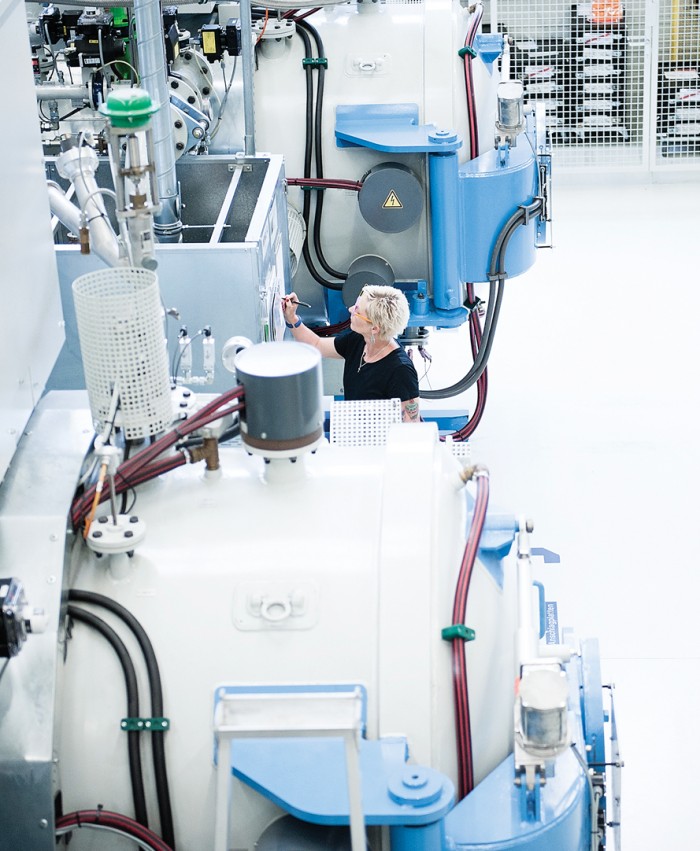
First produced in 2013, iBooster is installed in over 350,000 vehicles. Earlier this year it was updated with a new feature that connects via the car’s Wi-Fi to a driver’s home network and sends diagnostic and braking details to Bosch. Now “we know more about how and when a driver brakes than the driver does,” says Kolleck, before quickly explaining that the data is aggregated and anonymous.
Using this information, Bosch can rapidly prototype new hardware and software for future versions of iBooster that better fit specific driver profiles and client requirements. It can also mine the data for other autonomous driving applications or products—including those used on its own factory floors, where robots that specialize in parts delivery and production will increasingly move around on their own and interact in close physical proximity with human workers.
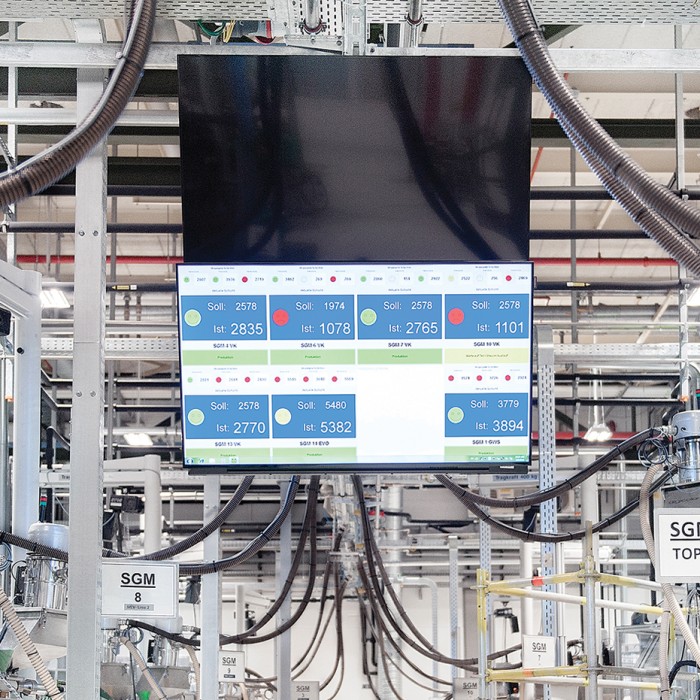
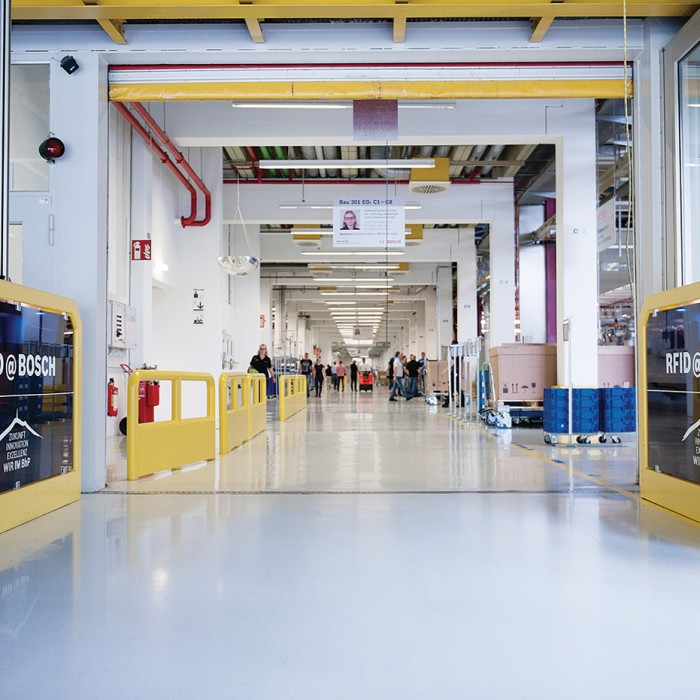
“What we will learn in inner-city traffic we can also realize … for inter-logistics in a factory,” says Assmann. With knowledge derived by adding sensor technologies to cars and collecting the resulting data, “we can make robots have eyes, ears, and feelings.”
Assmann has ambitions for this data even beyond Bosch’s internal applications. Increasingly, he says, the company will sell its know-how in logistics, data processing, and manufacturing as a service to others.
Two challenges loom over Bosch’s smart-factory project and these broader ambitions. The first is finding enough workers with the skills to run increasingly data-driven manufacturing systems. The second will be creating industry standards so such systems will be able to work together.
The financial stakes are far too high to let either of these obstacles get in the way of progress, however. In Germany, labor and energy costs are up, and increased automation and efficiency are how businesses like Bosch will stay profitable in the future. As Assmann puts it, embracing connected industry isn’t optional—“it is a must.”
Keep Reading
Most Popular
Large language models can do jaw-dropping things. But nobody knows exactly why.
And that's a problem. Figuring it out is one of the biggest scientific puzzles of our time and a crucial step towards controlling more powerful future models.
The problem with plug-in hybrids? Their drivers.
Plug-in hybrids are often sold as a transition to EVs, but new data from Europe shows we’re still underestimating the emissions they produce.
How scientists traced a mysterious covid case back to six toilets
When wastewater surveillance turns into a hunt for a single infected individual, the ethics get tricky.
Google DeepMind’s new generative model makes Super Mario–like games from scratch
Genie learns how to control games by watching hours and hours of video. It could help train next-gen robots too.
Stay connected
Get the latest updates from
MIT Technology Review
Discover special offers, top stories, upcoming events, and more.